When the summer heat is on, there’s nothing quite like a refreshing swim—and our dogs feel the same way. Swimming is excellent exercise, and if you’re full-time RVing like we are, you’re likely to find some beautiful swimming spots on your travels. Sierra loves splashing around in lakes, rivers, and the ocean. Ruby, on the other hand, is more of a belly-deep wader. But both girls enjoy cooling off when the sun is blazing.
Before you hit the water with your pup, here’s what every RVing dog owner should know to keep their furry companion safe.
- Is the Lake or River Dog-Friendly?
- Can Your Dog Swim?
- Safety Tips for Swimming in Natural Water
- Consider a Canine Life Jacket
- Don’t Let Your Dog Drink the Water
- More Smart Tips for Safe Dog Swimming
- Signs Your Dog Might Be Sick After Swimming
- Recommended Gear for Dog Swimming Adventures
- Final Thoughts
- Does Your Dog Love to Swim?
This post contains affiliate links. As a participant in Amazon Associates and various affiliate programs, we are compensated when qualifying purchases are made through our referral links at no additional cost to you. Full Disclosure
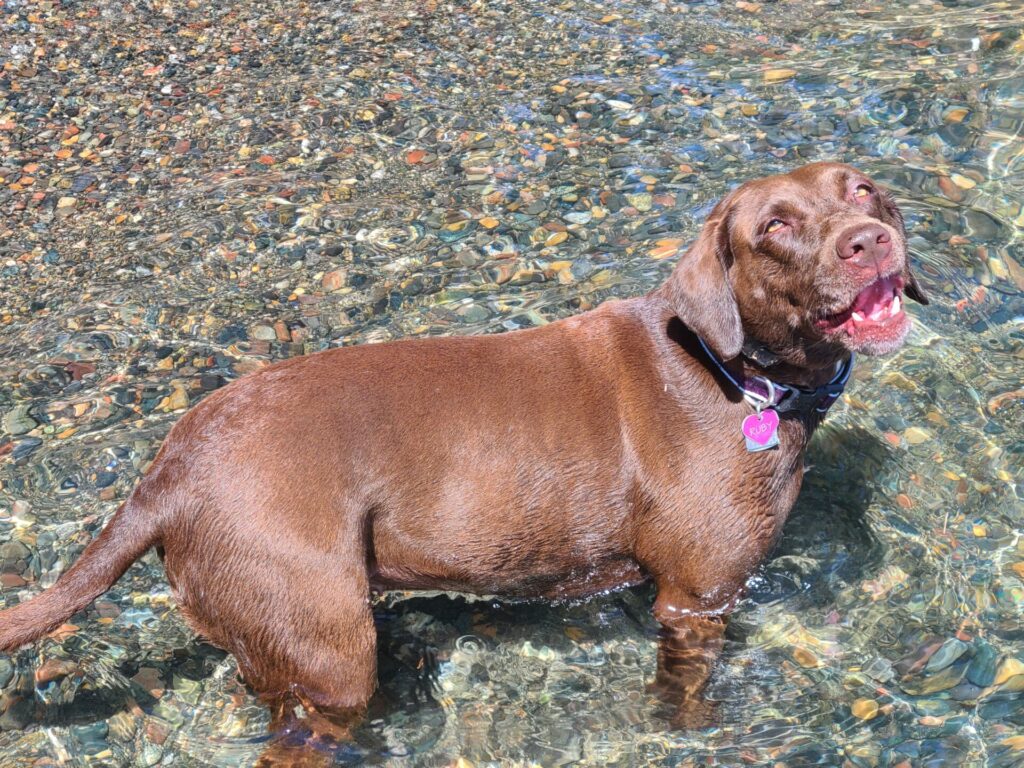
Is the Lake or River Dog-Friendly?
Before letting your dog take the plunge, make sure it’s allowed. Many lakes and beaches welcome dogs, except in designated swimming areas with lifeguards or roped-off beaches.
A quick search for “dog-friendly swimming lakes near me” should point you in the right direction. Always follow local signs and regulations.
Can Your Dog Swim?
Not every dog is a natural swimmer. Some breeds take to water instinctively, while others need guidance and reassurance. It’s best to introduce your pup to water early and slowly. Let them wade, splash, and build confidence.

Tip: Always supervise your dog’s first swimming sessions and encourage them gently.
Safety Tips for Swimming in Natural Water
Avoid Stagnant Water
As summer progresses and water levels drop, lakes and rivers can become stagnant. This raises the risk of harmful bacteria and even brain-eating amoebas, especially in hot, still water. Avoid small, unmoving bodies of water—no matter how tempting.
Watch Out for Harmful Algae Blooms (HABs)
Some of the biggest dangers are invisible—or deceptively colorful.
HABs can appear green, blue, red, or brown and may look like paint or scum. Blue-green algae (cyanobacteria) often lurk in ponds, lakes, and slow-moving rivers. Red tides are ocean-based blooms that release toxins harmful to both people and pets—even through the air.
Our Experience: We encountered water that looked like green paint while staying at Maumee Bay State Park on Lake Erie. It was a hard no for swimming that day.
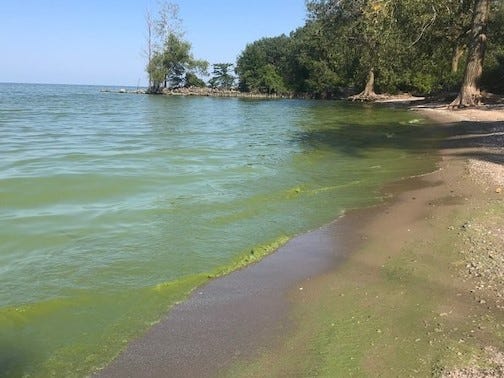
If the water looks off, smells bad, or has any discoloration, don’t let your dog swim or drink it.
Know the Risks of Rip Currents
Rip currents can form in any large body of water with breaking waves—not just the ocean. That includes the Great Lakes.
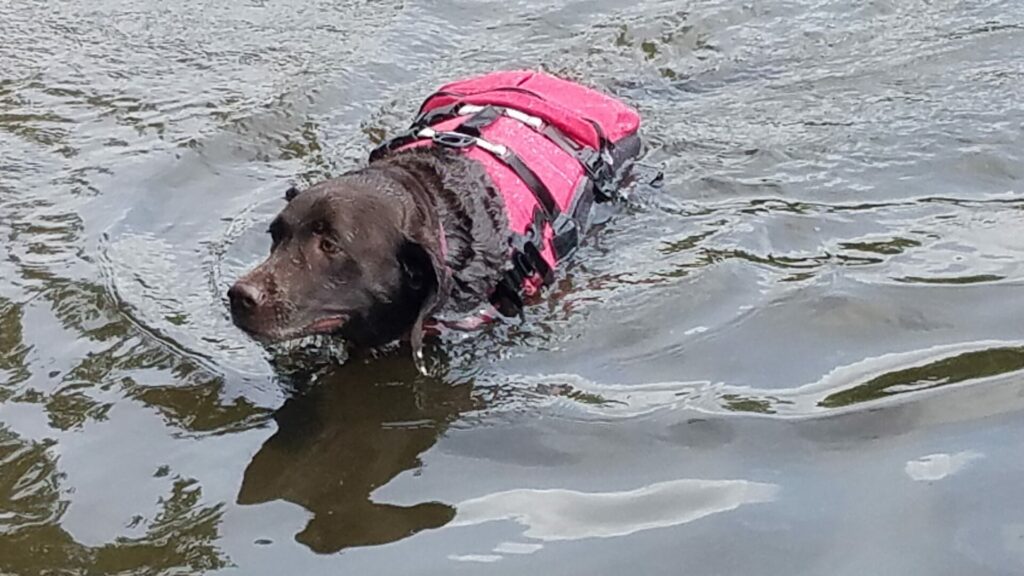
Dogs tend to handle rip currents better than people—often riding them out and returning to shore safely. Tragically, many dog owners have drowned trying to rescue their pets.
Takeaway: If your dog gets caught in a current, do not jump in after them. Call for help and trust that they’ll likely make it back on their own.

Consider a Canine Life Jacket
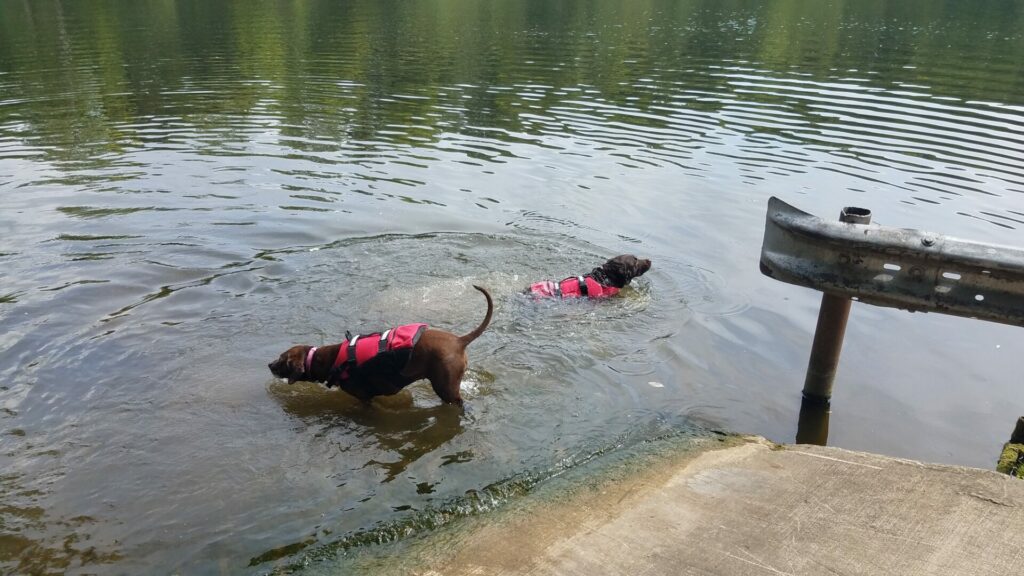
Dog life jackets are essential when boating but also great for dogs who:
- Aren’t strong swimmers
- Get tired easily
- Swim in deep or unpredictable water
Plus, they look adorable. Sierra and Ruby wear theirs when kayaking or going for long swims.
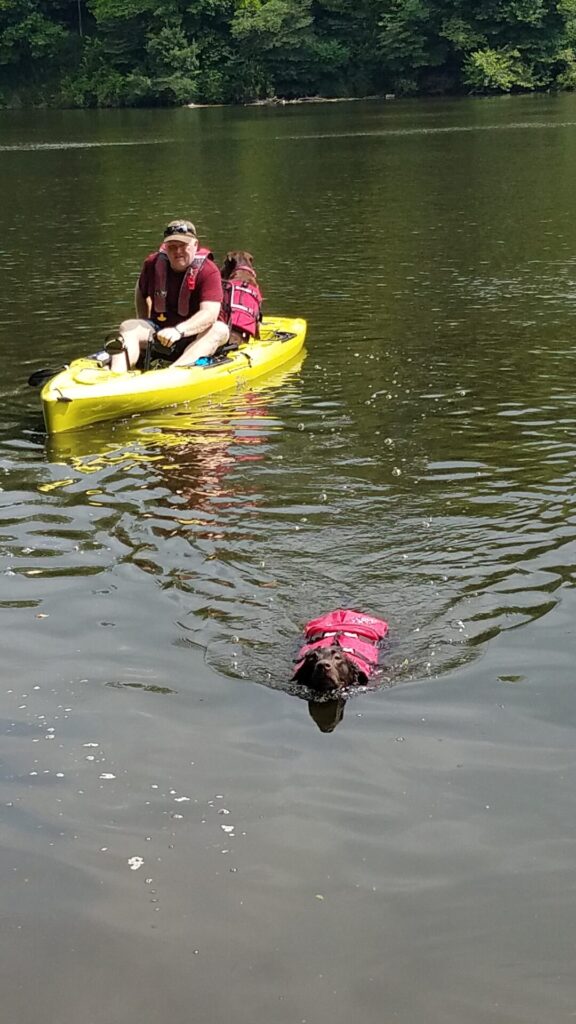
Don’t Let Your Dog Drink the Water
Natural water sources—lakes, ponds, rivers, and especially the ocean—can be full of harmful bacteria and parasites.
Why it’s dangerous:
- Freshwater can cause diarrhea or worse if contaminated
- Saltwater can lead to serious dehydration and even fatal kidney damage—a condition known as beach diarrhea
Solution: Bring plenty of fresh, clean water and offer it frequently during your swimming adventure.
More Smart Tips for Safe Dog Swimming
Watch for Sharp Objects
Wet paws soften and are more vulnerable to cuts from glass, metal, or rocks. Check your dog’s feet after a swim.
Bring a Dog First Aid Kit
From scrapes to splinters, having a pet-specific first aid kit can make a huge difference in an emergency.

Rinse or Wash Your Dog Afterward
Give your pup a good rinse (or full bath) after swimming to remove bacteria, salt, algae, or any lingering irritants.
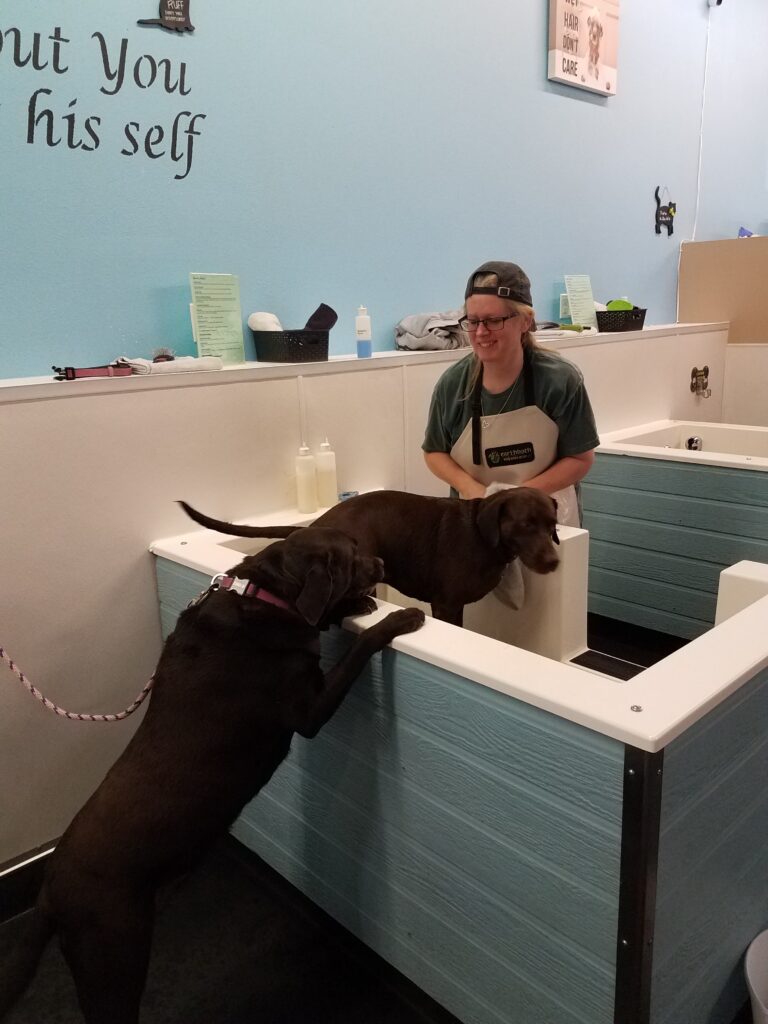
Don’t Forget the Ears
Water in the ears is the perfect recipe for an ear infection, especially in floppy-eared breeds. Clean your dog’s ears thoroughly after every swim. Ask your vet to demonstrate proper cleaning if you’re unsure.
Take a break
Sierra will swim and fetch a ball or stick all day if we let her. After swimming for a bit, we have to force her to take a break and catch her breath. This is another reason we bought her a life jacket.
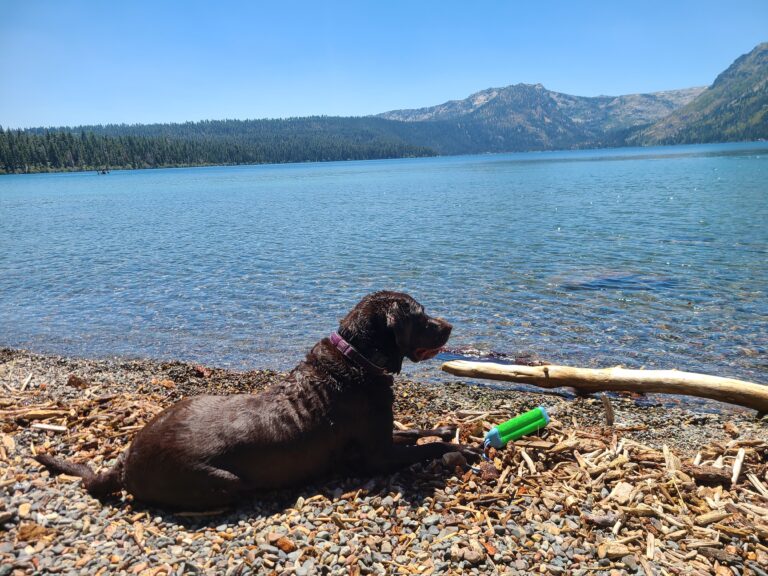
Signs Your Dog Might Be Sick After Swimming
Even if you’ve done everything right, keep an eye out for symptoms that might indicate a waterborne illness:
- Vomiting or diarrhea
- Lethargy
- Loss of appetite
- Fever
If you see any of these signs after a swimming trip, call your vet immediately. Some infections can be deadly if left untreated.
Recommended Gear for Dog Swimming Adventures
Here are a few items we never leave the RV without:
Final Thoughts
Swimming is one of the best ways for dogs to stay cool and active during summer—especially when you’re RVing and always on the move.
Whether it’s a lazy river day, a lake paddle, or a beach romp, keep these safety tips in mind to ensure every splash ends in happy tail wags and wet dog kisses.

Does Your Dog Love to Swim?
We’d love to hear your stories. Does your pup enjoy swimming like Sierra—or are they more like Ruby, content with a little wading? Drop us a comment below and let us know your favorite dog-friendly swimming spot.
If you’re looking to build your own home-based business like we have with this webpage, check out Wealthy Affiliate.
Wealthy Affiliate is an all-in-one platform that you can build your whole affiliate marketing business on. It combines training, software, and website hosting into one. This makes the whole process of starting an online business from scratch much easier, especially if you’re new to building a website.




